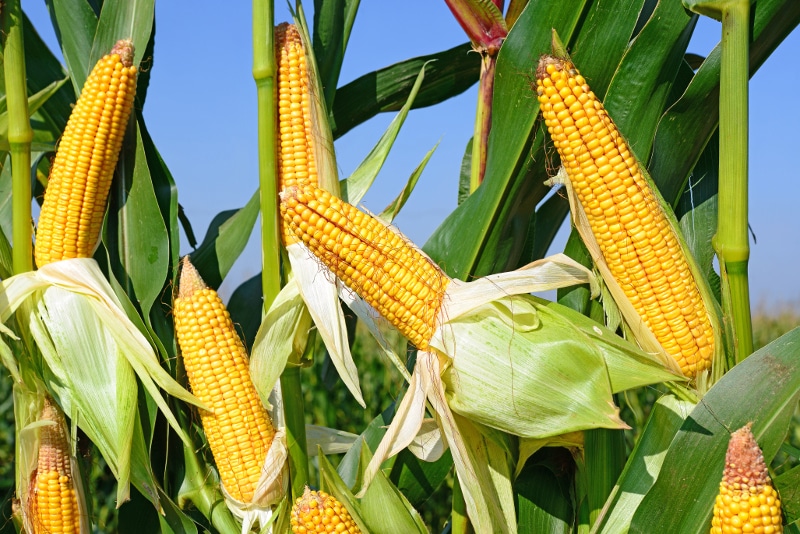Agriculture is increasingly being urged to reduce its dependency on external inputs, lower its environmental footprint and cope with more variable climatic conditions. So, it should come as no surprise that plant breeders have taken up the baton and have started to breed for those characteristics that contribute to crop resilience to biotic and abiotic stresses, in fact that already started a long time ago. The next challenge is to find criteria and methods to test and make value of the performances of those new plant varieties under conditions that are associated with sustainable and more variable farming practices.
Improve Variety Testing
The newly awarded INVITE project aims to address these issues by improving both the efficiency of variety testing and availability of information to stakeholders on variety performance under a range of production conditions and biotic and abiotic stresses. One expected impact is to help introduce plant traits that respond to new challenges and demands in the conventional and organic sectors, while also considering the economic return of growers.
The Community Plant Variety Office (CPVO) is one of the initiators of the consortium together with a handful of other institutions involved in variety testing. To get a better view on this project, European Seed talked with Martin Ekvad, President at the CPVO; Anne Weitz, Technical expert Agricultural species (CPVO) and Cécile Collonnier, Expert biomolecular techniques (CPVO).
Broad Representation
INVITE stands for INnovations in plant VarIety Testing in Europe and is a consortium that was set up in order to respond to a call for interest by the EU Commission under Horizon 2020, under which research in relation to plant variety testing would be financed. And to ensure a diverse representation of interests, 27 partners from various sectors such as variety testing, research, universities, conventional and organic farming and breeders agreed to join INVITE. The project offer was accepted by the Commission in December 2018 and the awarded amount is about 8 million euros. It is expected that the work will commence in the second half of 2019 and last for a period of five years. The project manager is Francois Laurens from INRA (a French agriculture research institute).
The project will focus on 10 crops selected according to a set of various criteria such as economic importance in the different partner countries, potential for studies on durability and adaptation to environmental changes, issues related to the assessment of DUS and/or VCU (maize, wheat, rye grass, sunflower, potato, tomato, apple, lucerne, soybean, rapeseed). In its attempt to identify the research needs and main challenges to be addressed, the EU Commission consulted main end-users such as examination offices, CPVO and breeders before launching the call. Special attention was given to the dissemination of the results to a wide range of stakeholders. INVITE plans to address DUS and VCU testing in a balanced way and intends to maximize synergies between them through related activities based on phenotyping, genotyping, modelling and database management.

Ekvad underlines that it is important that the EU spends money on improving efficiency in variety testing: “Agriculture and food systems sectors are at the very heart of the key challenges to be addressed for the years to come, including adaptation to climate change, ensure food security and safeguarding natural resources. Through the Horizon 2020 Work Program the EU aims at addressing such challenges, and the EU has included plant variety testing as an important element.”
Varieties Need to Perform Well
Some years ago, the Commission made an impact assessment in the framework of launching a proposal on a regulation on plant reproductive material. “During that assessment, it became apparent that overall, plant variety testing is something that both the regulator and breeders agree is important in order to provide certainty that the varieties that enter the market perform well” says Ekvad. “However, costs for such tests are constantly increasing. Such costs are born partly by the industry and partly by EU Member States that subsidise variety testing. Accordingly, it is in the interest of all that variety testing is carried out in efficient manners.”
The size of reference collections for the assessment of DUS is continuously increasing, which urges examination offices to find new strategies to control the size and cost of the trials. Ekvad: “Moreover, the necessity to adapt variety testing to new characteristics (e.g. traits relevant to sustainability and resilience), new requirements (e.g. resistance to pests and abiotic stresses in a context of reduction of inputs) and new agricultural practices (e.g. heterogeneity thresholds for alternative materials) makes the investments of the EU into research projects on these subjects absolutely essential.”
Financial Motivations

CPVO’s motivation to join the project was mainly a financial one says Weitz. “CPVO has an R&D Strategy aimed at increasing the quality of DUS, reducing costs, reducing duration by creating, where useful and possible, shared databases for reference collections and by integrating the use of biomolecular techniques (BMT) for the management of reference collections, for variety identification, and for enforcement (in collaboration with breeders).” Weitz, who is also Project Manager of the CPVO IMODDUS [1] working group, continues “The development of BMT adapted to variety testing is supported by the IMODDUS ad hoc group which identifies research needs and evaluates proposals submitted in the framework of the CPVO R&D annual procedure.”
Ekvad explains that the CPVO annual budget for R&D projects is 500,000 € which allows important projects to be launched. “However, the budget is not sufficient to engage in larger projects, for instance the setting up of comprehensive data bases which include phenotypical as well as genetic data on a large amount of varieties for certain species. Joining INVITE was considered as a good opportunity to increase substantially the funds for the work to be carried out by variety testing actors.”
Active Player
Collonnier shares that the second strong motivation of CPVO was to participate as an active player to the implementation of R&D objectives through the definition of the research tasks proposed in INVITE. “Particular importance was given to the choice of model species (covering the different types of propagation), to the needs for DUS testing in terms of practicability and efficiency (e.g. management of large reference collections, measuring of the whole collection in the field for the uniformity assessment in cross pollinated species, distinctness problems in certain species such as apple), and to the needs of breeders (confidentiality issues such as hybrid formulas, status and exchange of plant material, enforcement issues, variety identification along the value chain of a variety).”
Ekvad indicates that the role of the CPVO is to bring its experience and knowledge acquired from managing the EU DUS testing network into INVITE. “The CPVO has gained a lot of experience in the past 24 years in the ways varieties are tested, the technical challenges it represents and the approaches for harmonization of variety assessment and decision rules in relation to DUS.” As the technical protocols adopted by the CPVO are applicable for the DUS tests of a variety both for protection and for marketing authorization, CPVO’s contributions will be valuable for many aspects covered by INVITE.
“The CPVO is represented in the INVITE Executive Committee which is the decision implementing body of the project. CPVO will contribute to the discussion in all the eight technical Work Packages identified in the project. The project will require input from many CPVO experts, and my colleague Cécile Collonnier will be the CPVO staff member who will manage INVITE internally,” he says. “She is also the co-leader of Work Package 5 on testing the tools developed for application in DUS and performance testing. The CPVO will also contribute to certain tasks such as the work on coordination of variety testing networks and the diffusion of results to stakeholders and policy makers. The CPVO expects that the results of INVITE will lead to efficiencies and higher quality in variety testing.”
Achieving the Main Objective

According to Collonnier, the aim of the project is to explore, develop and test/prepare the implementation of new approaches. “There will be focus on Genetics × Environment × Management studies, (epi)genotyping, high throughput phenotyping (automatic observations by low-cost sensors based on fluorescence, thermal and spectral imaging techniques), bioinformatics and biostatistics,” she says.
Collonnier adds the project will make use of historical data from variety tests done in the past but will also produce new experimental data. “Bioinformatics analysis of genomic data will allow the development of new sets of molecular markers to improve the management of reference collections for DUS testing contributing to reduce the number of reference varieties used in the field when a candidate variety is tested. Genome wide association studies will be conducted to identify new markers linked to a range of phenotypic traits in order to accelerate the assessment of certain DUS characteristics.”
The use of modern high throughput phenotyping tools will also speed up observations and provide detailed and accurate phenotypic data. Biostatistical approaches will be used to develop for example improved ways of assessing uniformity, in particular for cross pollinated species.
“Regarding modelling, the idea is to use available molecular, phenotypic and agronomic data obtained in a given context to make prediction of variety response to a wide range of pedo-climatic environments. This could help identifying meta-environments for performance testing. In relation to DUS, these models could contribute to help assessing the resilience of certain DUS characteristics to environmental impact,” says Weitz.
Defining Efficiency
“As has been indicated above, efficiency should lead to lower costs,” says Ekvad. “This can be achieved by less time and resources spent and more affordable and easy-to-use tools. However, by using new models and tools we believe that quality of data and interpretation may be improved leading to no or less redundancy of analyses and making more value of existing processes. Optimized and harmonized procedures will in the best of worlds lead to both quicker and robust decisions on DUS and VCU, something we believe the INVITE project will contribute to achieve.”
Improvement Targets
The improvements targeted by the project are defined as follows:
– New tools for DUS and performance testing (phenotyping and genotyping tools, models)
– Identification and exploitation of potential synergies between DUS and performance testing
– Better coordination and sharing of data and databases between partners
– Improved procedures and protocols
– Strengthened networks
– Communication tools towards stakeholders and policy makers
Looking for Synergies
The focus of INVITE is variety testing in the framework of variety listing. DUS testing, however, also applies to plant breeders’ rights and under EU law the same technical protocols are used for the two.
“Indeed, the CPVO technical protocols for DUS tests are, and will be, used in the framework of listing applications and in the framework of intellectual property right applications,” says Collonnier. “INVITE addresses the importance to find synergies between DUS and VCU in the improvement of variety testing. Where characteristics are suitable for both, INVITE will investigate the possibility to describe the characteristics in a comparable manner. For instance, maturity in soya bean is a DUS characteristic and a VCU characteristic. The aim is to find ways to name and describe the characteristic in the same way for DUS and VCU purposes. The intention of the project is not to shift the existing balance of importance between DUS and VCU or to redefine the reasons why varieties are tested under the two schemes. The purpose is rather to improve each of them separately and possibly find synergies.”
The CPVO technical protocols are adopted by the Administrative Council of the CPVO in which EU member states and the Commission are members and the breeders’ organisations observers. “This ensures that public and private interests are represented when potential changes are discussed. The decision on admission of a variety to the national list and subsequently the common catalogue remains under the realm of the relevant national authority,” says Weitz. The implementation of the potential research results will follow the usual channels involving all relevant stakeholders.
Involving the Private Breeding Sector
Breeders are represented as active partners by the European Seed Association and the breeding companies NPZ and Bayer Crop Science. The project also involves a stakeholder platform and a Stakeholder Advisory Board (SAB) including representatives of the private breeding sector. Ekvad indicates that the SAB’s role will be to advise the consortium where and how the most promising results should be exploited. “More specifically they will ‘introduce stakeholder requirements in the development of INVITE results, advise on changes in societal and consumer priorities, propose changes to the direction of the project in line with stakeholder and end-user priorities for maximising the exploitation and benefits for the industry, review progress of the project annually and support dissemination of project results in their respective institutions and networks’.”
The SAB is represented by six persons from UPOV, Enza Zaden, Copa-Cogeca, Bingenheimer Saatgut, Bayer and CIOPORA.
“In addition, a Stakeholder Platform represented by a number of stakeholders, mainly from the industry, has been created to ease the dissemination of project outcomes and for consultation by the project partners on specific issues where the input from stakeholders is needed,” says Ekvad. “As I see it, the broad partnership in INVITE together with the SAB and the stakeholder platform will ensure that information on how the work of INVITE is conducted as well as the results of INVITE will be transparent and made available to all those interested. The CPVO will report regularly on work in progress to its stakeholders. This article is one example of our commitment to be transparent in when it comes to our involvement in INVITE.”
[1]Integration of moleculardata into DUStesting











